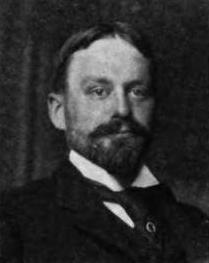George B. Agnew on:
[Wikipedia]
[Google]
[Amazon]
 George Bliss Agnew (1868 – June 21, 1941) was an American politician from
George Bliss Agnew (1868 – June 21, 1941) was an American politician from
''Official New York from Cleveland to Hughes''
by Charles Elliott Fitch (Hurd Publishing Co., New York and Buffalo, 1911, Vol. IV; pg. 347, 349f, 352 and 366f)
''The New York Red Book''
by Edgar L. Murlin (1903; pg. 105f)
The George Bliss Agnew papers
at the New York Public Library {{DEFAULTSORT:Agnew, George B. 1868 births 1941 deaths Republican Party New York (state) state senators Politicians from Manhattan Republican Party members of the New York State Assembly Princeton University alumni Deaths from pneumonia in New York (state) Burials at Green-Wood Cemetery
 George Bliss Agnew (1868 – June 21, 1941) was an American politician from
George Bliss Agnew (1868 – June 21, 1941) was an American politician from New York
New York most commonly refers to:
* New York City, the most populous city in the United States, located in the state of New York
* New York (state), a state in the northeastern United States
New York may also refer to:
Film and television
* '' ...
.
Life
He graduated fromPrinceton University
Princeton University is a private university, private research university in Princeton, New Jersey. Founded in 1746 in Elizabeth, New Jersey, Elizabeth as the College of New Jersey, Princeton is the List of Colonial Colleges, fourth-oldest ins ...
in 1891.
Agnew was a member of the New York State Assembly
The New York State Assembly is the lower house of the New York State Legislature, with the New York State Senate being the upper house. There are 150 seats in the Assembly. Assembly members serve two-year terms without term limits.
The Assem ...
(New York Co., 27th D.) in 1903
Events January
* January 1 – Edward VII is proclaimed Emperor of India.
* January 19 – The first west–east transatlantic radio broadcast is made from the United States to England (the first east–west broadcast having been ...
, 1904
Events
January
* January 7 – The distress signal ''CQD'' is established, only to be replaced 2 years later by ''SOS''.
* January 8 – The Blackstone Library is dedicated, marking the beginning of the Chicago Public Library system.
* ...
, 1905
As the second year of the massive Russo-Japanese War begins, more than 100,000 die in the largest world battles of that era, and the war chaos leads to the 1905 Russian Revolution against Nicholas II of Russia (Shostakovich's 11th Symphony i ...
and 1906
Events
January–February
* January 12 – Persian Constitutional Revolution: A nationalistic coalition of merchants, religious leaders and intellectuals in Persia forces the shah Mozaffar ad-Din Shah Qajar to grant a constitution, ...
.
He was a member of the New York State Senate
The New York State Senate is the upper house of the New York State Legislature; the New York State Assembly is its lower house. Its members are elected to two-year terms; there are no term limits. There are 63 seats in the Senate.
Partisan com ...
(17th D.) from 1907 to 1910, sitting in the 130th, 131st, 132nd and 133rd New York State Legislature
The 133rd New York State Legislature, consisting of the New York State Senate and the New York State Assembly, met from January 5 to July 1, 1910, during the fourth year of Charles Evans Hughes's governorship, in Albany.
Background
Under the p ...
s.
In 1908, he co-sponsored, with Assemblyman Merwin K. Hart
Merwin Kimball Hart (June 25, 1881 – November 30, 1962) was an American lawyer, insurance executive, and politician from New York (state), New York who founded the "National Economic Council" and was "involved in controversial matters througho ...
, the Hart–Agnew Law
The Hart–Agnew Law was an anti-gambling bill passed into law by the Legislature of the State of New York on June 11, 1908. It was an amalgam of bills enacted as Chapter 506 and 507 which were sponsored by conservative Assemblyman Merwin K. Hart ...
, an anti-horse-race-track-gambling bill which led to a total shutdown of horse-racing in the State of New York.
Agnew was defeated by John G. Saxe II in the November 8, 1910, election in a district that was Republican by a great majority.
References
''Official New York from Cleveland to Hughes''
by Charles Elliott Fitch (Hurd Publishing Co., New York and Buffalo, 1911, Vol. IV; pg. 347, 349f, 352 and 366f)
''The New York Red Book''
by Edgar L. Murlin (1903; pg. 105f)
External links
The George Bliss Agnew papers
at the New York Public Library {{DEFAULTSORT:Agnew, George B. 1868 births 1941 deaths Republican Party New York (state) state senators Politicians from Manhattan Republican Party members of the New York State Assembly Princeton University alumni Deaths from pneumonia in New York (state) Burials at Green-Wood Cemetery